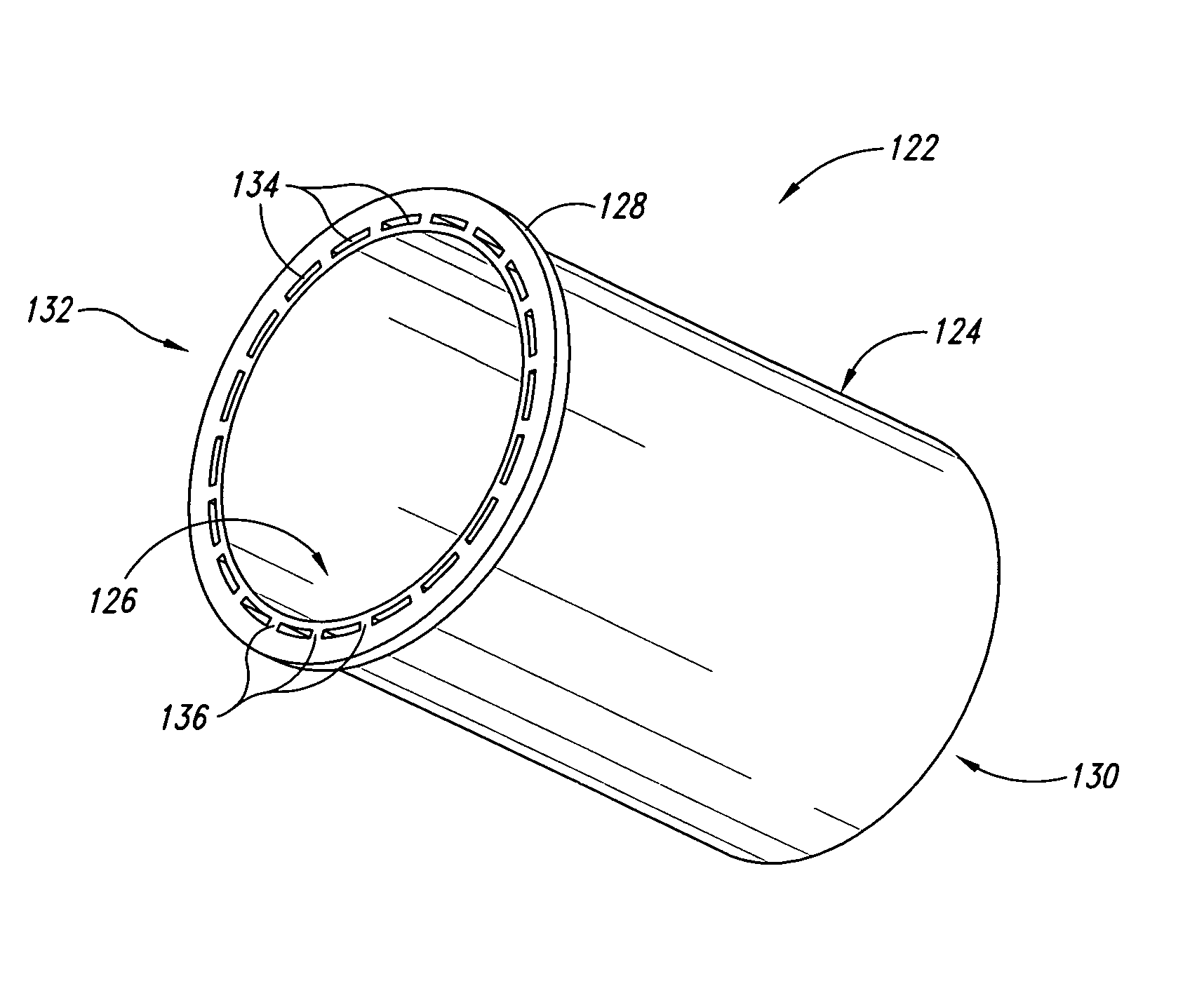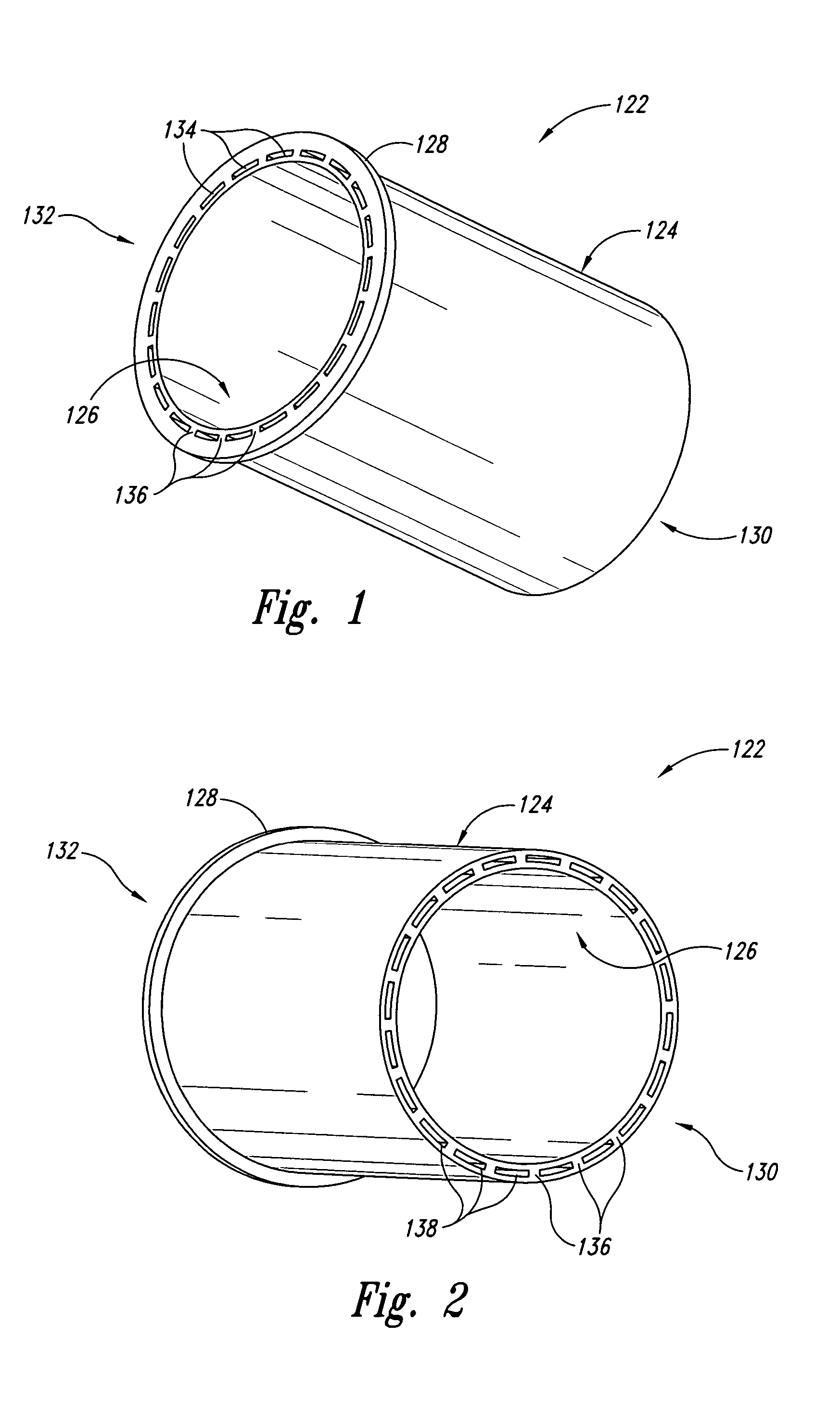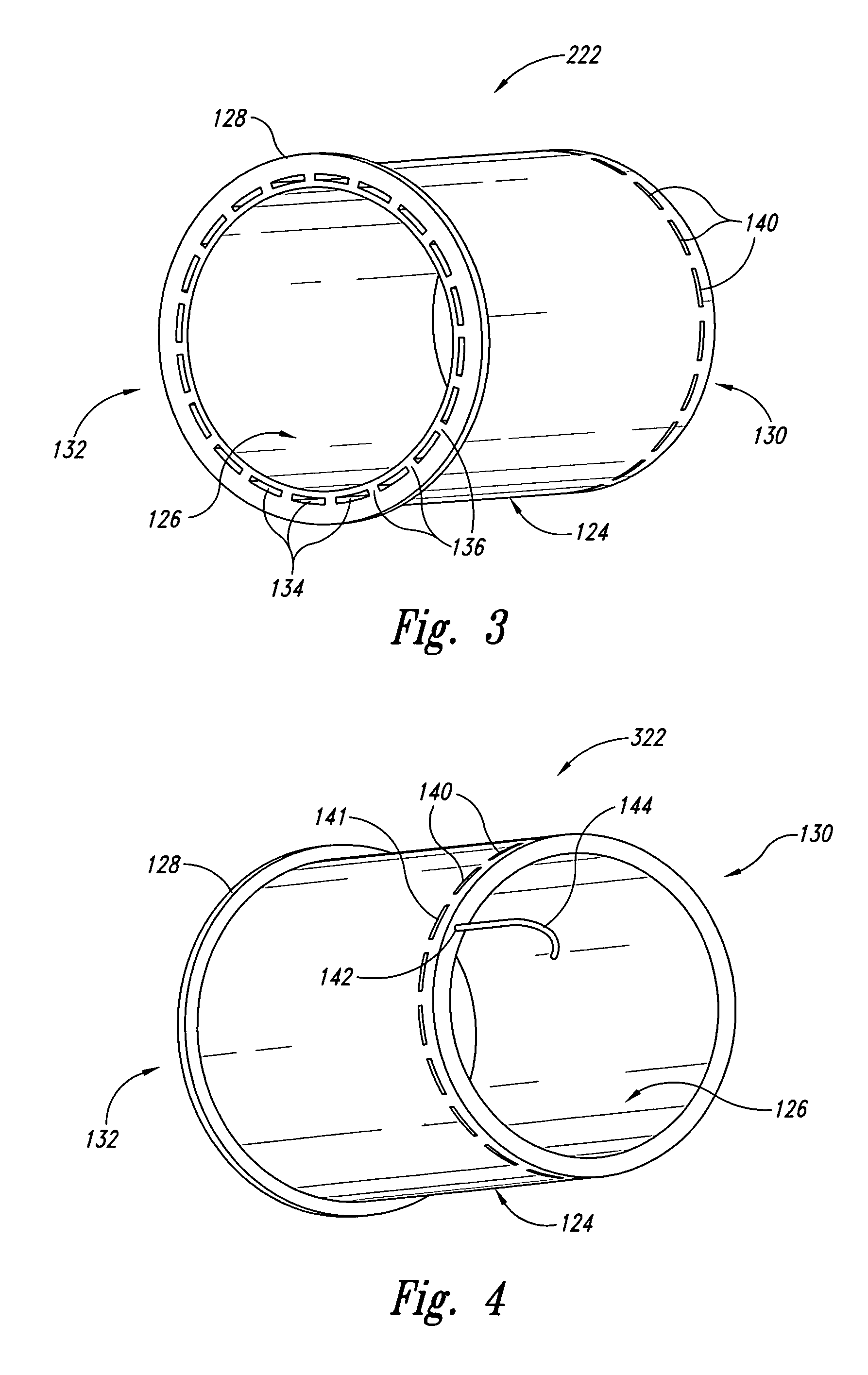Fluid-cooled cylinder liner
a technology of cylinder liners and fluids, which is applied in the direction of cylinders, machines/engines, mechanical equipment, etc., can solve the problems of increasing emissions, increasing the complexity of the cooling system, increasing the cost of manufacturing these engines, and increasing the weight of the cooling system. , to achieve the effect of reducing manufacturing costs and high thermal conductivity
- Summary
- Abstract
- Description
- Claims
- Application Information
AI Technical Summary
Benefits of technology
Problems solved by technology
Method used
Image
Examples
Embodiment Construction
[0023]Particular embodiments of the present invention provide novel fluid-cooled cylinder liners. Preferred liners are generally in the shape of annular cylinders and contain a plurality of passages; arranged parallel to the axis of the cylinder, between the inner and outer surfaces of the cylinders. Preferred passages are arranged so that they are typically closer to the outer surface of the cylinder than the inner surface. Each passage has at least two openings. Openings that appear at either end of the cylinder are referred to herein as “ports,” whereas those that appear along the inner or outer surface of the cylinder are referred to herein as “windows.” Thus, a passage with two ports (with one on either end of the cylinder) would run the entire length of the cylinder, while a passage with a port and a window or a passage with two windows would run only for a fraction of the cylinder length. Although windows can be arranged at any position along the outer or inner surfaces of th...
PUM
 Login to View More
Login to View More Abstract
Description
Claims
Application Information
 Login to View More
Login to View More - R&D
- Intellectual Property
- Life Sciences
- Materials
- Tech Scout
- Unparalleled Data Quality
- Higher Quality Content
- 60% Fewer Hallucinations
Browse by: Latest US Patents, China's latest patents, Technical Efficacy Thesaurus, Application Domain, Technology Topic, Popular Technical Reports.
© 2025 PatSnap. All rights reserved.Legal|Privacy policy|Modern Slavery Act Transparency Statement|Sitemap|About US| Contact US: help@patsnap.com



